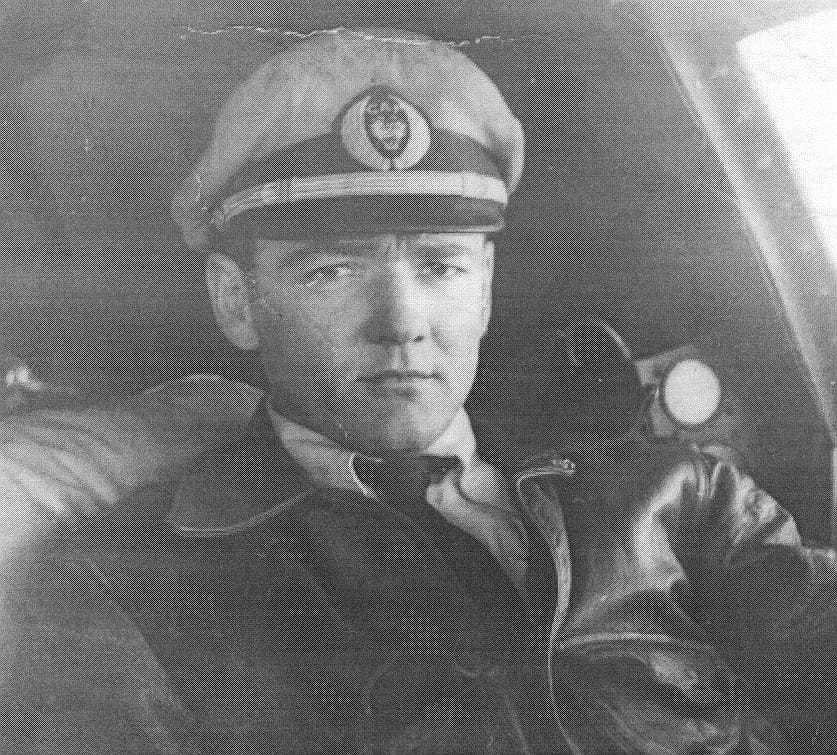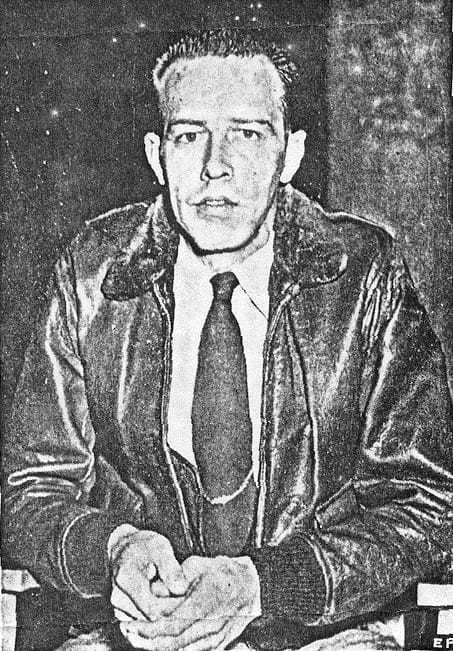Norman Schwartz & Robert Snoddy
In November 1952, two young pilots volunteered for a mission to extract an agent from Manchuria in Communist China. They knew the operation – a snatch pickup – would be risky, but they were willing to go on the mission.

The plan was detailed:
- On Nov. 29, 1952, Norman Schwartz and Robert Snoddy would fly their C-47 in an operation to extract an agent with a snatch (or aerial) pickup.
- The agent would be extracted with a device that involved a hook extended out the plane’s back door that would snag a line between two upright poles on the ground. The agent would be connected to the line by a harness. Once the hook caught the line, the agent would be jerked off the ground.
- Two other CIA officers (John Downey and Richard Fecteau) on board the plane would hoist the agent into the aircraft.
But unbeknownst to the team, they were about to fly into a trap – a plot to down the aircraft was in motion. The agent team on the ground had been turned by the Communist Chinese.
When the team was ready to run the extraction, Schwartz and Snoddy flew a dry run by the pickup point. As the plane came in low for the pickup, flying at only 60 knots, gunfire erupted. Schwartz and Snoddy directed the aircraft nose up in the wake of the deadly crossfire. This action prevented an immediate crash. But, the engines cut out and the aircraft glided to a controlled crash. Downey and Fecteau survived. (For more on the Downey and Fecteau saga, see “Extraordinary Fidelity: Two CIA Prisoners in China, 1952-73.”)
Both Schwartz and Snoddy died at the scene.
* * * * *
But Who Were These Men?
Norman Schwartz was raised in a working-class neighborhood in Louisville, Kentucky. He was the fifth of seven siblings. When Schwartz was a teenager, his No. 1 priority was learning to fly. He joined the Marines in 1943, becoming a Marine Corps fighter pilot in the Pacific theater during World War II. He was awarded with a Distinguished Flying Cross and an Air Medal with two gold stars.
In February 1948, Schwartz left the service to fly for Civil Air Transport (CAT) – a CIA proprietary company. He piloted CAT aircraft for four years before the tragedy in November 1952.
He was 29 years old when he died in the line of duty. He was survived by his parents and siblings.

Robert Snoddy first took up flying in 1940 under the Civilian Pilot Training program in his home state of Oregon. He decided to join the Navy in 1942, while studying aeronautical engineering at Oregon State University. His flying background helped him gain admittance to the Naval Aviation Cadet program. After time in Corpus Christi, Texas, Snoddy went to Florida for flight training.
He went on to serve as a Navy pilot in the Pacific. He was awarded with an Air Medal with four stars, as well as a Purple Heart and several battle stars. He was credited with downing two Japanese planes. Snoddy was discharged in 1946 with the rank of Lieutenant.
Snoddy signed on to fly for CAT in June 1948. He was 31 years old when he made the ultimate sacrifice. Three weeks after he was killed, his wife Charlotte gave birth to their daughter, Roberta, the couple’s only child.

* * * * *
Remembering These Brave Men
The CIA honored Schwartz and Snoddy with stars on the CIA Memorial Wall in 1998. Both men are remembered for their unquestionable bravery. Their names are included in the CIA Book of Honor.
In 2002 and again in 2004, the Joint POW-MIA Accounting Command (JPAC), based in Hawaii, sent forensic and excavation teams to the 1952 crash site near the town of Antu in China’s Jilin Province. In June 2004, JPAC discovered human remains that were shipped back to the United States in a flag-draped coffin.
On March 24, 2005, the Armed Forces DNA Identification Laboratory (AFDIL) was able to identify the remains found at the site as Robert Snoddy’s. His remains were placed inside his mother’s plot in Eugene, Oregon.
To date, efforts by JPAC and AFDIL have not identified any remains associated with Norman Schwartz.

